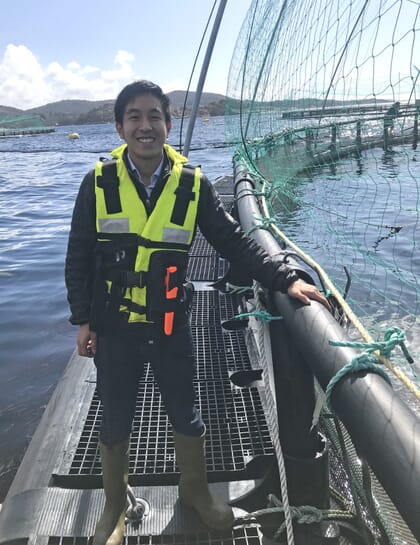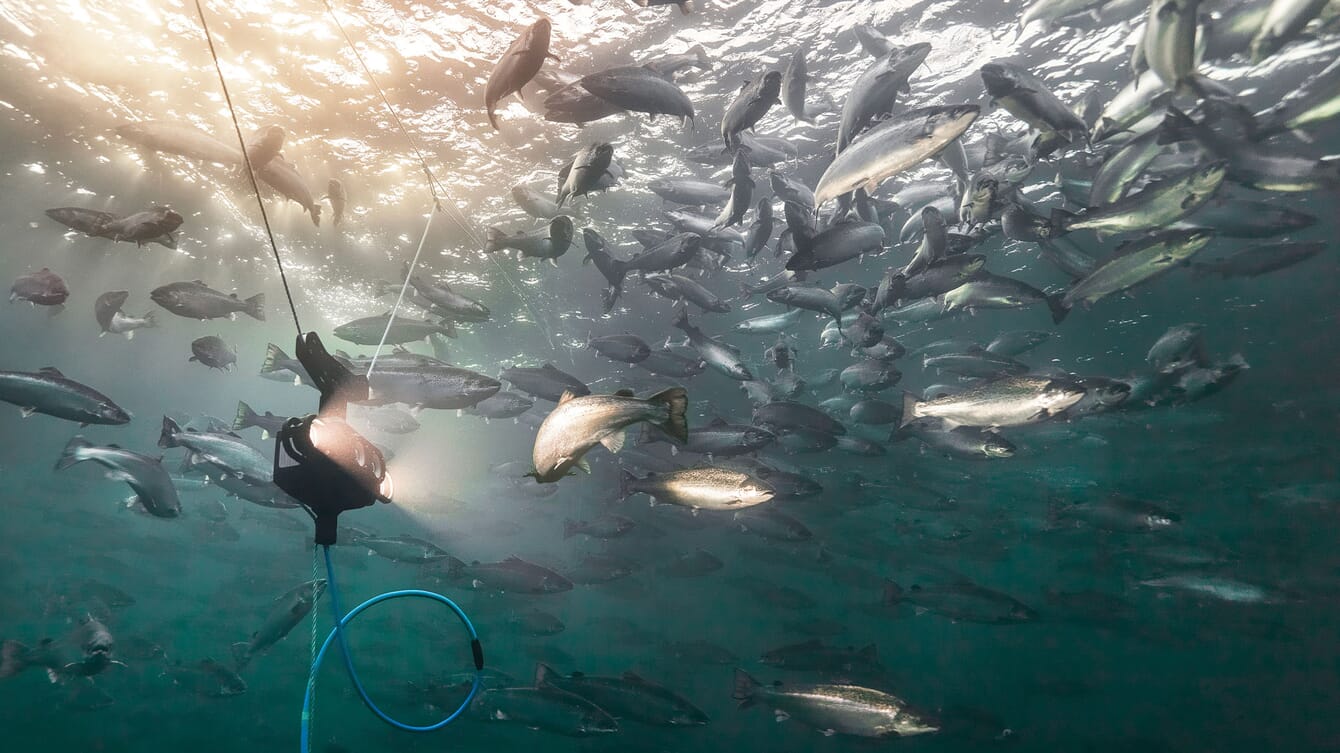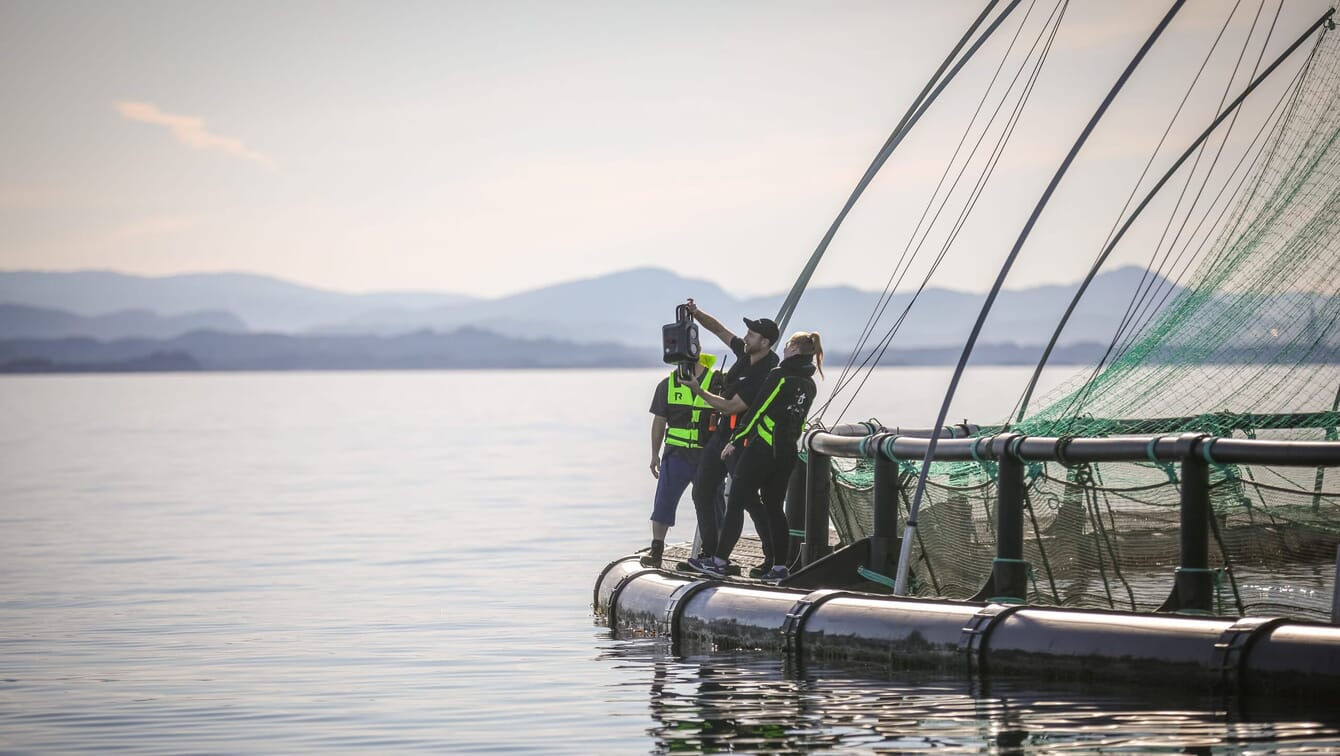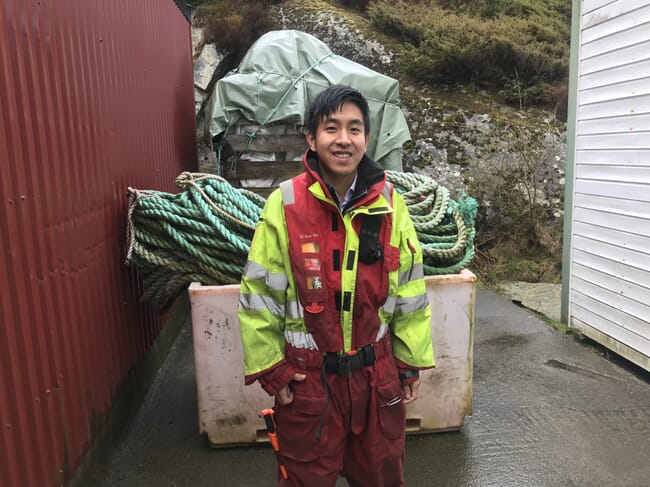
Aquabyte, Shang's aquatech startup, has raised $48 million since it was founded in 2017 © Aquabyte
The startup, which has developed cameras that leverage AI and machine learning to assess the health, welfare and growth of salmon – backed by software that allows the data to be analysed and applied to a range of uses – has raised an impressive $48 million since it was founded by Shang in 2017.
It’s all the more impressive as San Francisco-based Shang says that he only really become aware of aquaculture less than a decade ago, after speaking to a friend who’d been doing some angel investing in the space. Sensing a commercial opportunity he decided to investigate the sector’s major pain points, via a tour of US fish farms.
The difficulty of accurately monitoring and measuring the fish was one of the key themes that the farmers mentioned to Shang. Being practically and technically minded he decided to develop his own device for doing this.
“The idea of a camera that could monitor the fish, understand the weight and growth, and then optimise feeding was really interesting to me. So I built a protype camera to measure robotic fish in my bathtub,” Shang nonchalantly recalls.
Having established that salmon farming was the most advanced aquaculture sector, Shang took his prototype to Norway, to visit the 2017 edition of AquaNor, and see what the farmers made of it.
“They were interested, but they also asked whether the camera could count the sea lice and measure the fish welfare, not just the biomass. So I decided to develop a system that didn’t just measure growth and weight but was also a general monitoring device. And the first product we launched was for automatic sea lice counting,” he explains.

Leveraging AI and machine learning, Shang and the Aquabyte team have developed cameras that assess the health, welfare and growth of salmon © Aquabyte
The camera proved so accurate for lice counting that in 2020 it was the subject of a landmark decision, in which the Norwegian food safety authorities ruled that the system was accurate enough for its users to not have to perform manual lice counts on a weekly basis – thereby removing a process that was both stressful for the fish and time-consuming for the farmers.
As manual lice counts rely on a very small sample of hand-caught fish, in a cage containing hundreds of thousands of salmon, it is also statistically questionable, so the quality of the data was also being improved.
Buoyed by the success of the lice counter Shang went on to develop a product for estimating the biomass of the fish and then another for monitoring observable welfare indictors – such as wounds, scale loss and maturation. While the tech clearly has the ability to improve data accuracy and analysis, Shang was also aware of the importance of applying the data analysis in a meaningful way.
“For us it’s not just about being a data company. Ultimately the goal is to improve the profitability and sustainability of these fish farms, which means we had to understand the actual business applications: like how the farmers use the data to make decisions. We wanted to make sure the data could be used by the farmers for new applications like harvest planning, treatment planning and making more effective decisions,” he explains.
This is where building a large team in Bergen – many of whom are former farmers – was crucial to ensuring the technology was relevant. As well as ensuring the practicality of the tech, the Norwegian team is also able to train the customers.
“People think that the technology comes out of the box and is magic, but there’s a lot behind the scenes in terms of how the farmers use it and adopt it, to ensure they get the return on investment. Which is why we provide implementation, training, as well as the technology,” Shang explains.

Shang wants to make sure the data from Aquabyte's devices can be used by farmers for new applications like harvest planning, treatment planning and making more effective decisions © Aquabyte
Aquabyte has also tailored its offerings to make them applicable to different farming divisions – whether production planners or fish health managers.
“We want to target the fish farm holistically, but we need to make sure that both the farm workers understand the value of the systems and the top management understand the value of data-driven decisions, so we’re working throughout the value chain,” he reflects.
Shang believes that maintaining a presence in both Bergen and San Francisco has been crucial to the startup’s impressive rise.
“Combining Silicon Valley innovation with Norwegian aquaculture is the essence of what we’re trying to do. It’s not just building technology in the vacuum and shipping it to Norway. The Silicon Valley ecosystem gives us access to the expertise in technology and machine learning, as well as the access to top investors and top advisers. While, having a large part of our team in Bergen means that the technology is developed closely with the customer and used correctly to deliver real value and use cases, which is critical for actually getting adoption in the industry. Bridging that is what might set us apart from our competitors,” Shang reflects.

It was after speaking to US salmon farmers who expressed the challenges of accurately monitoring and measuring fish that Shang decided to develop his own device for doing this © Aquabyte
Having such a USP is important, given the growing range of cage monitoring devices and data analytics tools available to farmers. It also helps to explain how the startup managed to raise a $25 million series B funding round last July.
Shang sees the funding as being a good sign for the wider aquaculture community, not just for Aquabyte.
“It shows investor appetite and interest. I think a lot of investors, even if they don’t know much about aquaculture, have an interest in AI-for-good, or the oceans. The Nature Conservancy is one of our recent investors, which shows that its not just traditional tech VCs but also others looking to promote the mission,” he reflects.
Looking ahead
Aquabyte now has customers across the salmon farming world and Shang believes that the system could be available to farmers of lower value species “in five to ten years”.
Either way, Shang is determined to help the industry overcome what he identifies as its key bottleneck: how it can sustainably grow supply to keep pace with demand.
“One way this can be done is by making existing farms more efficient – which we hope to do through data decision support, business applications and eventually automation. The other is through new forms of production – be that offshore or on land – in areas where automation and monitoring are required. For us it’s about helping to plug into a lot of these macro trends and helping the industry becoming more efficient, automated and enable different forms of production,” he concludes.




